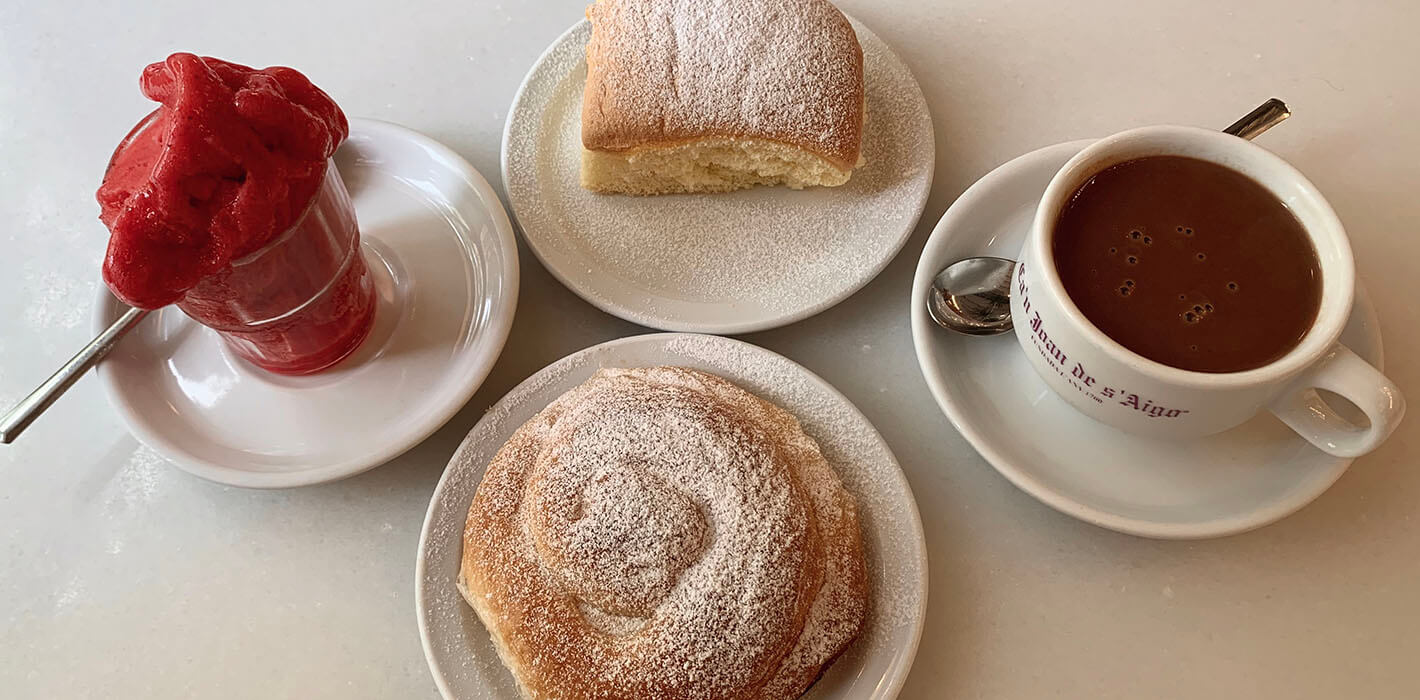After a visit walking through the centre of Palma, seeing its churches and its streets, a mid-afternoon snack at the ice cream parlour and chocolate shop Can Joan De S’Aigua is quite refreshing. It’s the oldest such establishment in the city and has been a meeting place for Palma residents for more than a century. Its patrons are all ages: families, grandparents, teens; all find their place around a nice ice cream or hot chocolate with delightful pastries (the ensaimadas and cuartos are recommended). And for the less sweet-toothed, a soft drink with one of the island’s savoury traditional pastries (empanadas or coca de verdura).
After an interesting tour of “the Gothics”* and “the modernists,”* of Palma, the palace intrigues of yore and the King’s gardens, we allow ourselves to be carried along by the endless queue that forms at the entrance of the beautiful cathedral. This houses the mysteries of No. 8* and a revolutionary contemporary painter’s* particular vision of his own “Sistine Chapel.”*
Since 1700, and just a few metres from the Hotel Boutique Posada Terra Santa.
The house of Joan,* whom I imagine with his donkeys,* transporting the cold* stored up from winter, weaving through the Tramuntana roads to the capital, to refresh the city’s most refined palates. As they say, a tireless traveller, he learned the trade in Italy, and ever since then, enveloped by plush comforts* and Guardiola glassware,* has offered within his home the best snow.* Snow of many flavours and colours. The most delicious traditional sweets can be dipped into the snow and, of course, one can taste the best drink of the gods!*
By Regina Palomero
*Gothics and modernists: The city of Palma has one of the most beautiful and interesting Gothic quarters in Spain, just as it has interesting modernist buildings. Its beautiful churches and buildings repay close attention.
*No. 8: A beautiful effect produced only twice a year during sunrise, caused by sunlight entering the cathedral’s rose window.
*Revolutionary painter: Referring to the globally renowned Mallorcan painter, Miquel Barceló.
*Sistine Chapel: Alluding to the unusual chapel in Palma Cathedral with a contribution from the painter Barceló.
*The house of Joan: Translated name of the city’s oldest ice cream parlour and chocolate shop.
*Donkeys: Back then (and even today, in some areas of the Serra de Tramuntana), accessing the mountains required going on foot, with donkeys to transport supplies.
*The cold: Referring to the ice that accumulated over winter.
*Plush comforts: Referring to the velvet tapestries, always red, frequently used with three-piece suites in the ancestral houses of Palma.
*Guardiola: Glass workshop highly valued for its artisanal blown glass. Bringing back a glass souvenir is recommended.
*Snow: Referring to ice cream.
*Drink of the gods: Some ancient civilisations gave this name to the drink made with cocoa.




